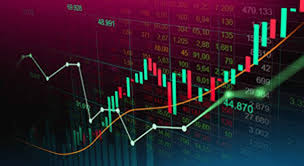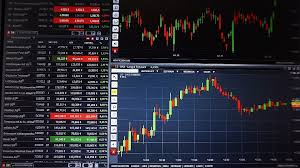
What is Forex Trading?
Forex trading, or foreign exchange trading, is the process of buying and selling currencies on the global market, with the aim of making a profit. Traders engage in forex trading for various reasons, including speculating on currency fluctuations, hedging against international currency and interest rate risk, or diversifying their investment portfolio. The forex market is the largest financial market in the world, with a daily trading volume exceeding $6 trillion.
For more in-depth resources on forex trading, visit what is forex trading https://acev.io/.
How Does Forex Trading Work?
Forex trading occurs in currency pairs, like EUR/USD (Euro/US Dollar) or GBP/JPY (British Pound/Japanese Yen). The first currency in the pair is known as the base currency, while the second currency is termed the quote currency. The exchange rate between the two denotes how much of the quote currency is needed to purchase one unit of the base currency.
Traders buy a currency pair when they believe that the base currency will appreciate against the quote currency, and sell when they believe it will depreciate. For instance, if a trader expects that the euro will strengthen against the dollar, they would buy the EUR/USD pair. If their prediction is accurate, they can sell it later at a higher price to secure profits.
Key Concepts in Forex Trading

1. Pips
A pip, or “percentage in point,” is the smallest price move that a given exchange rate can make based on market convention. Most currency pairs are quoted to four decimal places; thus, a movement from 1.1050 to 1.1051 represents a one pip change.
2. Leverage
Leverage allows traders to control a larger position with a smaller amount of capital. For example, with a leverage ratio of 100:1, a trader can control a $100,000 position with just $1,000 in their account. While leverage can magnify profits, it can also considerably increase risks, leading to substantial losses.
3. Margin
Margin is the amount of money that a trader must deposit to open and maintain a leveraged position. Different brokers have different margin requirements. Understanding margin is crucial, as insufficient margin can lead to a margin call, where the broker requires the trader to deposit more funds to maintain the open position.
Benefits of Forex Trading
Forex trading offers several advantages:

- High liquidity: The forex market is highly liquid, allowing traders to enter and exit positions with ease.
- 24-hour market: The forex market runs 24 hours a day, five days a week, facilitating trading at convenient times for traders worldwide.
- Variety of trading options: Traders can invest in a wide range of currency pairs, commodities, and other financial instruments.
- Low transaction costs: Compared to other markets, forex trading generally has lower transaction costs due to the tight spreads offered by brokers.
- Accessible to everyone: Forex trading can be done with small capital investments, making it accessible for individuals with varying financial backgrounds.
Risks in Forex Trading
Despite its advantages, forex trading carries significant risks:
- Market volatility: Currency prices can change rapidly due to economic news, geopolitical events, and market sentiment, exposing traders to the risk of losses.
- Leverage risk: High leverage can amplify both gains and losses, making it possible to lose more money than initially invested.
- Emotional decision-making: The psychological factors involved in trading can lead to poor decision-making, such as overtrading or holding onto losing positions for too long.
- Counterparty risk: Trading through brokers inherently involves risks related to the broker’s reliability. Traders must ensure they work with reputable and regulated brokers.
Getting Started with Forex Trading
For those interested in starting forex trading, here is a step-by-step guide:
- Education: Begin by educating yourself about the forex market, trading strategies, and technical analysis. Consider taking online courses or reading books on forex trading.
- Choose a brokerage: Research and select a reputable forex broker based on fees, trading platforms, customer service, and regulatory status.
- Open a trading account: Register and set up a trading account with your chosen broker; choose between a demo account to practice without risk or a live account for real trading.
- Develop a trading plan: Create a robust trading plan that outlines your goals, risk tolerance, trading strategies, and rules for entering and exiting trades.
- Start trading: Begin trading with small positions to gain experience and gradually increase your size as you become more comfortable and confident in your trading skills.
Conclusion
Forex trading can be a lucrative yet challenging activity that requires dedication, knowledge, and experience. By understanding market fundamentals, practicing sound risk management, and developing a personalized trading strategy, you can navigate the complexities of the forex market and work towards achieving your financial goals.
